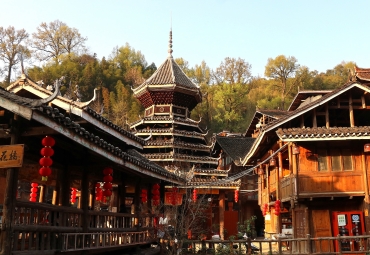Guiyang reduces carbon emission with forests
Guiyang, capital of Southwest China's Guizhou province, is promoting the forest ecological system construction to realize carbon fixation and reduce carbon emission. Research shows that every 1 hectare of forests consumes 1 metric ton of carbon dioxide and releases 0.73 tons of oxygen.
Since the 13th Five-Year Plan (2016-20), Guiyang has planted 1.73 million mu (115,520 hectares) of forests, making the total forest area reach 6.48 million mu.
In 2021, Guiyang's live wood growing stock reached 25.34 million cubic meters, more than 800,000 mu of broad-leaved economic forests were planted, and social funds were invested in developing featured economic forests such as Shandong maple, oil-tea camellia, Sichuan pepper, and walnut.
Guiyang's forests can now fix 3.45 million tons of carbon annually, which is the highest in years. Guiyang plans to renovate 600,000 mu of low-yield forest by 2025 to further improve forests' carbon sink function.
In recent years, Guiyang has taken strict measures to protect and utilize forest and grass resources, fight crimes such as the damage of forests, grasslands, and wetlands, reduce carbon emission led by unreasonable land utilization and land damage, prevent fires, and control pests in forests.
Guiyang has cooperated with Guizhou University to supervise the city's carbon fixation function, analyze the forests' carbon neutrality process, and establish a forest carbon sink evaluation system to prepare for carbon trading in the future.
All rights Reserved. 京ICP备13028878号-8







 Overview
Overview Guiyang
Guiyang Guian New Area
Guian New Area Liupanshui
Liupanshui Anshun
Anshun Qianxinan
Qianxinan Qiandongnan
Qiandongnan Qiannan
Qiannan Zunyi
Zunyi Tongren
Tongren Bijie
Bijie Guizhou commits to culture preservation and rural vitalization
Guizhou commits to culture preservation and rural vitalization Guizhou voice at 2025 national two sessions
Guizhou voice at 2025 national two sessions Meet the 'genius moms' at Shenzhen cultural fair
Meet the 'genius moms' at Shenzhen cultural fair 

